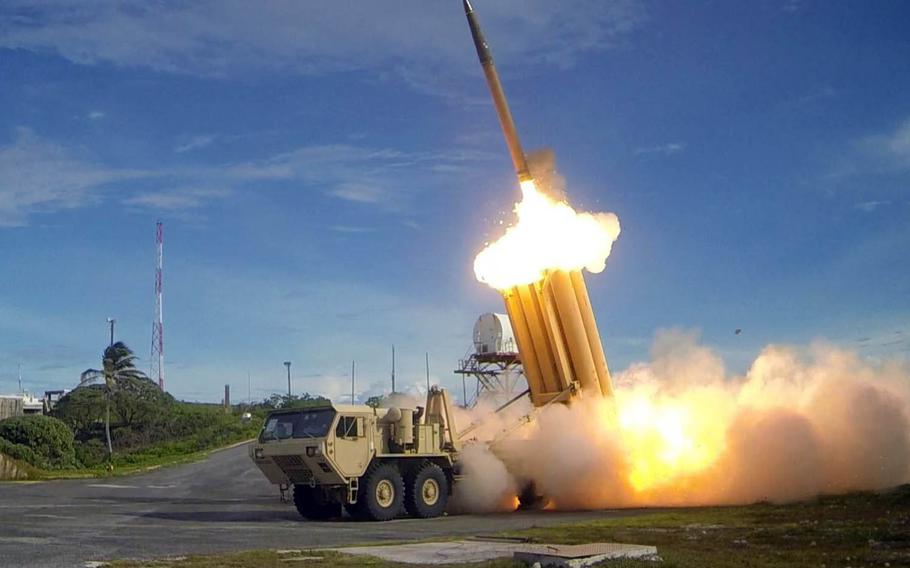
A Terminal High Altitude Area Defense, or THAAD, interceptor is launched during a test in 2013. (Ralph Scott/Missile Defense Agency)
WASHINGTON — The controversial American anti-missile battery deployed to South Korea to protect the U.S. ally from a potential North Korean attack has reached its initial ability to intercept an incoming rocket, a U.S. defense official said Monday.
The Army weapon known as Terminal High Altitude Area Defense, or THAAD, has been ready to shoot down a threatening North Korean missile as of Sunday, the official said on the condition of anonymity. But it will be some months before the entire system is up and running full time, the official added.
The United States and South Korea announced in July that the two countries had reached an agreement to deploy the defensive weapon, which is designed to destroy short- and medium-range missiles at a high altitude.
THAAD’s initial operating capability comes as already heightened-tensions on the Korean Peninsula continue to escalate. North Korea test-fired a missile Saturday, an operation that the U.S. military said failed when it quickly blew up above North Korean territory. It was at least the eighth missile that the Kim Jong Un regime has launched this year in defiance of increased warnings and economic sanctions from the international community.
But THAAD faces opposition from locals in the rural region of Seongju of South Korea, where it is deployed, and from China, which has expressed military concerns about the weapon.
Protests broke out near the THAAD site in the southern portion of South Korea on Wednesday in opposition to the system, especially its deployment ahead of the country’s May 9 presidential election. The front-runner, Moon Jae-in, has called for THAAD’s deployment to be suspended until the next president can review the agreement.
THAAD, made by Lockheed Martin Corp., has six truck-mounted launchers that can fire up to 48 interceptor missiles. It also includes radar that can detect and track ballistic missiles.
That massive radar system is what most concerns China. Chinese officials have said the United States could use the radar to spy on them, and Beijing has imposed “unofficial” economic sanctions on South Korea for agreeing to the THAAD deployment.
Last week, President Donald Trump told Reuters that it “would be appropriate” for South Korea to pay the $1 billion price tag for THAAD.
The White House appeared to walk back that assertion over the weekend.
Trump’s National Security Adviser H.R. McMaster told Fox News on Sunday that the United States would pay for the system as long as the current agreement remained in place. If the THAAD agreement is renegotiated, Trump could seek to share the expenses for the weapon.
“What I told our South Korean counterpart is until any renegotiation — that the deal’s in place, [and] we’ll adhere to our word,” said McMaster, an Army lieutenant general.
dickstein.corey@stripes.com Twitter: @CDicksteinDC